During my recent trip to Llandudno, in North Wales, I drove with my father across the Menai Straits to visit Parys Mountain on the Isle of Anglesey. I wanted to see the site of an ancient copper mine that some historians say was the largest copper-producing mine in the world during the 18th and 19th centuries. Infact, copper mining of one sort or another began at the site nearly 4,000 years ago during the Bronze Age. Today, much of the site is a park with what must be one of the most unique landscapes in the whole of the United Kingdom. Coincidental to my visit to the park, a story was published in The Times newspaper a few days later stating that a local mining company, Anglesey Mining, is looking at restarting copper extraction at Parys Mountain due to the current worldwide demand for copper. So I will look out for more news about that to see whether copper production from the site really does start again, which I think would be quite remarkable given the long history of the copper industry at the site itself, as well as at other locations nearby.
The site of the copper mine on Parys Mountain – Mynydd Parys in the Welsh language – covers a large area that includes a 2.4 mile (3.8 km) hiking trail that visitors can use to view almost the entire site. It was a bright sunny day when we visited the mountain, which helped to showcase the kaleidoscopic array of color from the different minerals that lie scattered in the rocks, including iron, lead and zinc, in addition to the copper. The mine produced copper from 1768 until 1924, which is a long time for industrial activity to impact on the environment, so I was expecting to see an ugly industrial wasteland. I was very surprised to find a beautiful park that must have taken a lot of hard work and money to turn into a pristine and awe-inspiring landscape. It seems strange to call a post-industrial landscape “pristine,” but that is how it looked to me. There were remnants of some of the old industrial buildings scattered about, but most of the site consisted of canyons and cliffs resulting from mining activity, and grasses, heather and other vegetation that had crept back onto the site over recent years.
As we made our way around the hiking trail, I was reminded of some of the national parks and monuments I have visited in the western United States. The color and texture of the rocks all around me and crumbling under my feet brought to mind the volcano that I explored a few years ago at Sunset Crater, a short drive north of Flagstaff in Arizona. But each time I reached some high ground and looked out over the verdant fields of the surrounding countryside and the hazy expanse of the Irish Sea I escaped from those memories of past adventures and thought how great it was to be in such a place at that time on a glorious summer day. The most alien-looking part of the park was the remains of the opencast mine (the “Great Opencast”), which we reached after descending from the top of the mountain. It really was a sight to behold, with high rocky cliffs, canyons and hints of valleys. The mixture of minerals gave the rocks different hues of purple, yellow, green and brown. Less inspiring perhaps, the view also reminded me of a World War I battlefield, with craters and mounds of earth and not a single tree to provide some shade.
The remains of buildings that were once used for copper smelting, storing tools and all the other activities the mine workers once employed to extract, process and export copper were located in different areas throughout the park. Some buildings were well preserved, with chimneys and near-complete stone walls, but other buildings were barely visible, with just the low outlines of what were once walls. Some of these buildings were very difficult to spot because they blended with their surroundings so well and were almost invisible to my untrained eyes. In a few places, I was only able to make out these remains after staring at a cliff-face for a few moments until my eyes had adjusted to the light and texture of the rocks in front of me and my mind was able to make out traces of where the old buildings once stood. I had never been to any place quite like this before. Apart from the landscape and the views of the surrounding country, what amazed me most of all was that the whole park was so clean and tidy. I didn’t see a single item of trash on the ground during our entire trek around the site. Eventually, after climbing to the top of a small hill, we came to a point that overlooked the parking area and we then made our way down the steep track back to our car.
After completing our wandering around the site of the old copper mine, we left and headed to the “Copper Kingdom” museum at the little port of Amlwch, from which copper was once exported to markets around the world. The small town was very close to the Parys Mountain park and we arrived at the harbor after only about 15 minutes, and that was only because we took a wrong turn on the way and had to ask someone for directions. After parking our car, we walked to the quayside, to see where ships once exported copper and other minerals. We saw several small ocean-going sailing craft, a couple of fishing boats and other more industrial-looking boats.
The harbor was bordered with high walls all around it and about half-way toward the sea there was a jetty with the old Watch House building and lighthouse, dating from 1853, from where, presumably, the harbor master once kept a careful watch over the harbor. We found the museum but, unfortunately, it was closed. I should really have checked the museum opening times ahead of our visit. Despite this disappointment, the weather was so wonderful – bright sunshine and a mostly clear blue sky – that we still had a very enjoyable walk around the harbor. We bought some ice cream in the building overlooking the drydock, which is now a cafe, and then sat at a table outside and enjoyed the view of the boats and the sea.
More information about the mine on Parys Mountain and the port of Amlwch can be found on the following websites: www.copperkingdom.co.uk, http://www.visitanglesey.co.uk and
http://www.angleseyheritage.com.
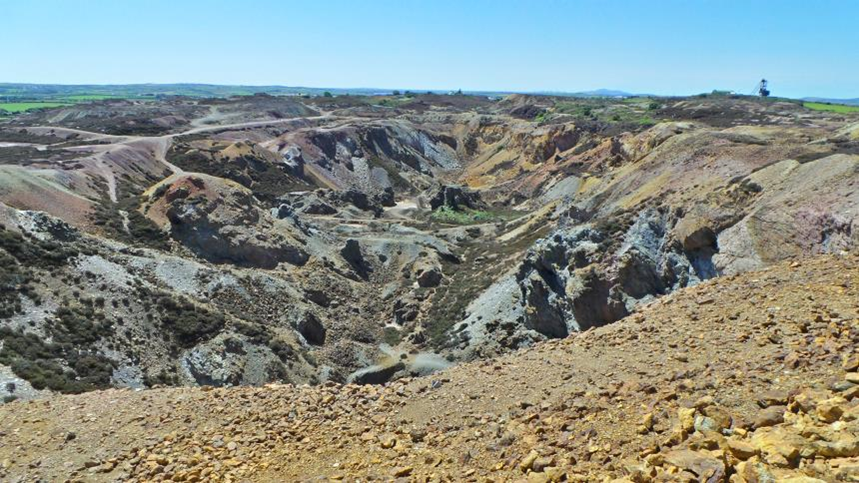
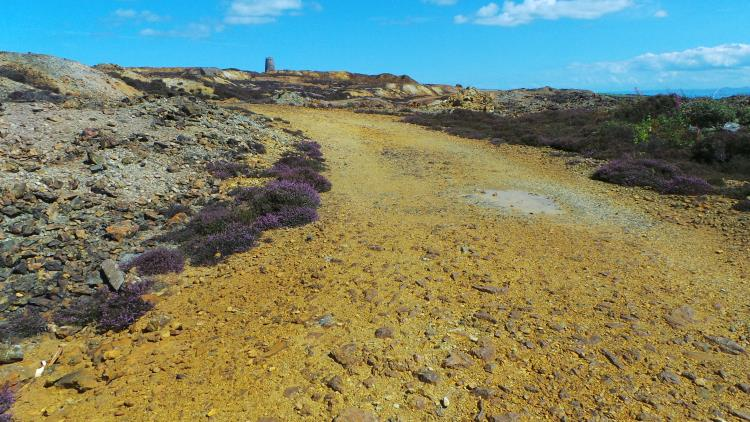
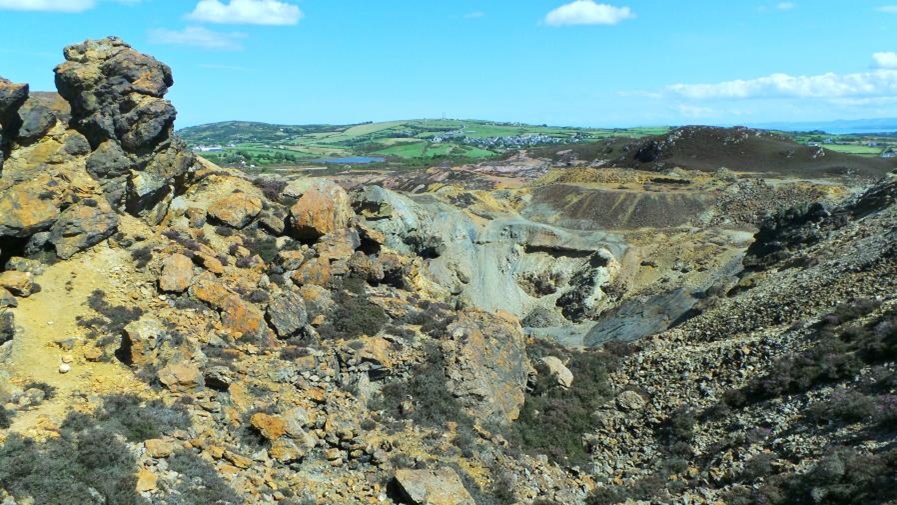
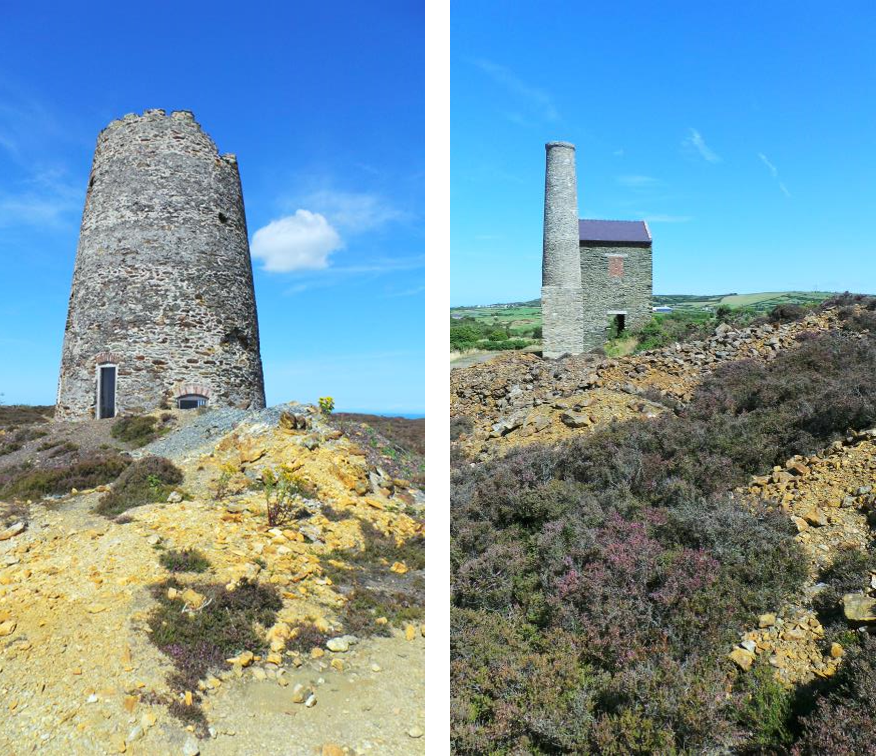

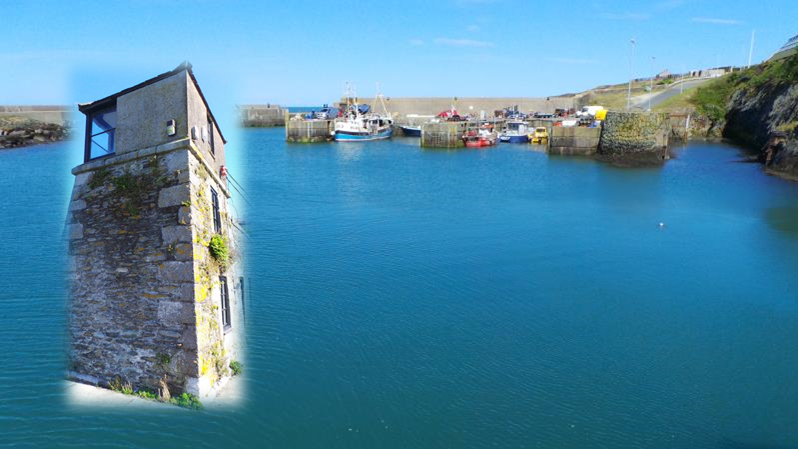

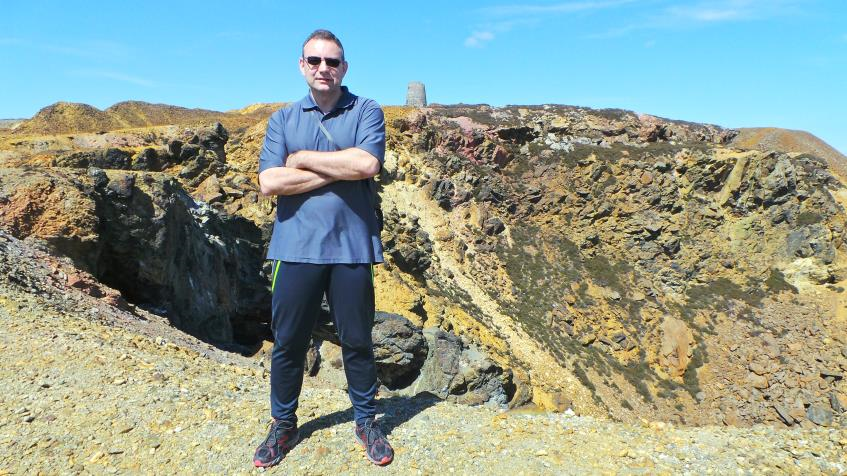
Another great writing I enjoy reading… fabulous photographs too that make me want to visit the place.
I loved reading this description of our visit to Parys mountain and the harbour nearby. Even though I was actually there with Alan at the time, I particularly enjoyed reading the perceptions of another person. Our combined view and insight into this brief adventure made the journey really worthwhile, from a historical, personal and leisure point of view.